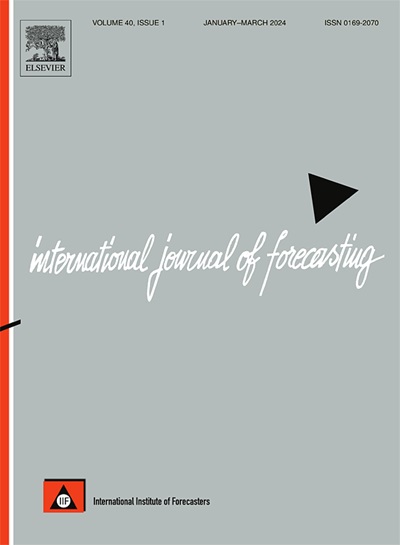An extended logarithmic visualization improves forecasting accuracy for exponentially growing numbers, but residual difficulties remain
IF 7.1
2区 经济学
Q1 ECONOMICS
引用次数: 0
Abstract
Humans find it notoriously difficult to predict the future development of numbers in scenarios where the data exhibits exponential growth. This study explored how employing logarithmically scaled graphs can improve forecasting accuracy in such scenarios. Experiment 1 shows that a modified visualization improves forecasting, mitigating the inaccuracies encountered with linear and ordinary logarithmic depictions. The modification consists of putting the y-axis on the right side of a logarithmically scaled graph and extending the x-axis to the range of the forecast period. This effect was independent of general graph literacy, and participants were more confident in their estimates. To uncover the role of tick marks in estimation accuracy, we conducted a second experiment manipulating the presence of minor tick marks and varying target values systematically with respect to their proximity to the next major tick mark. Participants performed worse for target values midway between two major tick marks and no accuracy benefits related to the presence of tick marks. Analysis of eye movements during the same task suggests that the poor utilization of minor tick marks is not simply due to a lack of attention but to difficulties in converting the location into the corresponding numerical value.
扩展的对数可视化提高了指数增长数字的预测精度,但仍然存在一些困难
众所周知,在数据呈指数增长的情况下,人类很难预测数字的未来发展。本研究探讨了在这种情况下如何使用对数缩放图来提高预测精度。实验1表明,改进的可视化改进了预测,减轻了线性和普通对数描述所遇到的不准确性。修改包括将y轴放在对数比例图的右侧,并将x轴扩展到预测周期的范围。这种影响与一般的图形素养无关,参与者对自己的估计更有信心。为了揭示打勾标记在估计精度中的作用,我们进行了第二个实验,操纵小打勾标记的存在,并根据它们与下一个主要打勾标记的接近程度系统地改变目标值。参与者在两个主要标记之间的目标值表现较差,并且没有与标记存在相关的准确性益处。对同一任务中眼球运动的分析表明,小打钩标记的不充分利用不仅仅是由于缺乏注意力,而是由于难以将位置转换为相应的数值。
本文章由计算机程序翻译,如有差异,请以英文原文为准。
求助全文
约1分钟内获得全文
求助全文
来源期刊

International Journal of Forecasting
Multiple-
CiteScore
17.10
自引率
11.40%
发文量
189
审稿时长
77 days
期刊介绍:
The International Journal of Forecasting is a leading journal in its field that publishes high quality refereed papers. It aims to bridge the gap between theory and practice, making forecasting useful and relevant for decision and policy makers. The journal places strong emphasis on empirical studies, evaluation activities, implementation research, and improving the practice of forecasting. It welcomes various points of view and encourages debate to find solutions to field-related problems. The journal is the official publication of the International Institute of Forecasters (IIF) and is indexed in Sociological Abstracts, Journal of Economic Literature, Statistical Theory and Method Abstracts, INSPEC, Current Contents, UMI Data Courier, RePEc, Academic Journal Guide, CIS, IAOR, and Social Sciences Citation Index.
 求助内容:
求助内容: 应助结果提醒方式:
应助结果提醒方式:


